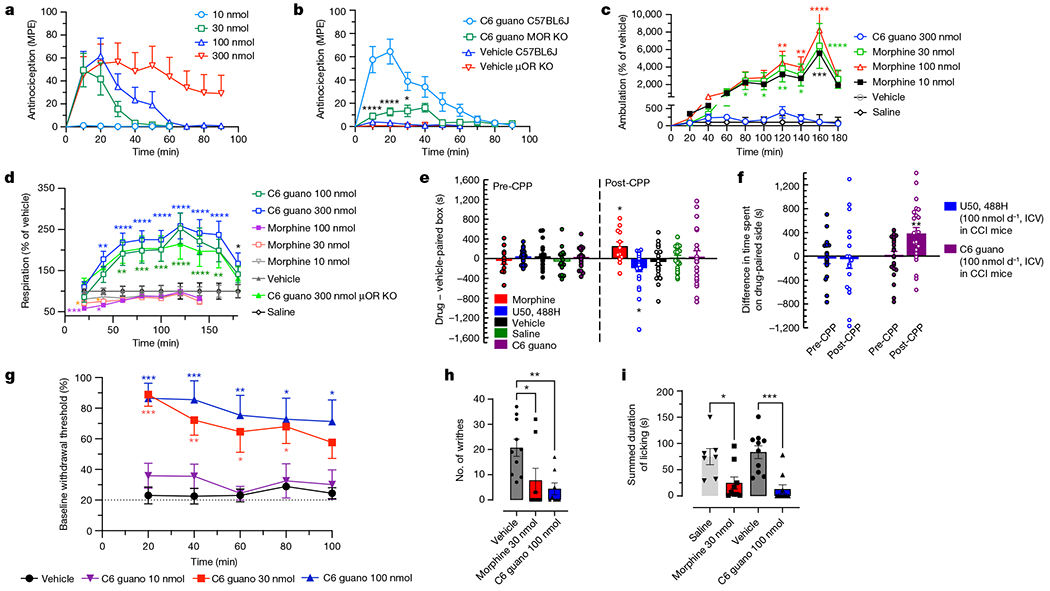Fig. 4 |. C6 guano exhibits μOR-mediated antinociception without CPP, CPA or hyperlocomotor effects.

a, Antinociceptive time course: C57BL/6J mice were administered C6 guano by ICV injection and antinociception was measured using the 55 °C tail-withdrawal assay. Data are shown as mean percentage antinociception (MPE) ± s.e.m. An ED50 (with 95% confidence interval) of 18.77 nmol (5.49–55.54 nmol) was calculated for C6 guano. b, Antinociception by 100 nmol ICV C6 guano was attenuated in μOR-knockout (KO) mice compared with wild-type (C57BL/6J) or vehicle-treated (veh) mice. Data are MPE ± s.e.m. c,d, Locomotor effects and respiratory depression. C57BL/6J mice were administered either saline, vehicle, morphine (10, 30 or 100 nmol ICV), C6 guano (100 or 300 nmol ICV) and ambulation (c) or number of breaths (d) was measured every minute and averaged in 20-min bins. Data are presented as percentage of vehicle response ± s.e.m. c, Morphine treatment resulted in hyperlocomotion, whereas the C6 guano (300 nmol ICV) effect was not significantly different from ICV vehicle at any time point. d, Morphine did not result in any significant decrease in respiration rate at 10 nmol, but caused respiratory depression at 30 nmol and 100 nmol doses. C6 guano caused increased respiration rate at 100 nmol and 300 nmol doses compared with vehicle. There were no significant differences between wild-type and μOR-knockout mice treated with 300 nmol ICV C6 guano. e, C6 guano (100 nmol ICV) treatment did not result in CPP or CPA changes relative to vehicle, whereas morphine (30 nmol ICV) resulted in CPP and U50,488H (100 nmol ICV) resulted in CPA. Minimum, median and maximum values–U50,488H pre-conditioning (pre-CPP): −207 s, 52 s, 344 s; U50,488H post-conditioning (post-CPP): −1,436 s, −109 s, 178 s; morphine pre-CPP: −542 s, −23 s, 413 s; morphine post-CPP: −299 s, 154 s, 819 s; C6 guano pre-CPP: −364 s, 43 s, 499 s; C6 guano post-CPP: −878 s, −42 s, 1,164 s; saline pre-CPP: −416 s, −93 s, 595 s; saline post-CPP:−411 s, 129 s, 438 s; vehicle pre-CPP: −377 s, 43 s, 573 s; vehicle post-CPP: −865 s, −75 s, 533 s. f, Comparison of C6 guano and U50,488H in an operant model of antinociception using CCI–CPP. A schematic representation of the CCI–CPP model protocol is presented in the Supplementary Methods. Points represent the difference in time spent on the drug-paired side. Data are mean ± s.e.m. U50,488H treatment in this model did not result in CPP or CPA, whereas C6 guano treatment resulted in CPP. Minimum, median and maximum values: U50,488H pre-CPP: −771 s, −52 s, 699 s; U50,488H post-CPP: −1,170 s, −67 s, 1,293 s; C6 guano pre-CPP: −767 s, 101 s, 438 s; C6 guano post-CPP: −566 s, 388 s, 1,397 s. g, Dose- and time-dependent anti-allodynic activity of C6 guano in a CCI model of neuropathic pain. Mechanical allodynia produced by sciatic nerve ligation was reduced between 20 and 100 min after treatment with 30 nmol or 100 nmol ICV C6 guano but not by 10 nmol ICV guano or vehicle. Data are mean ± s.e.m. h, Antinociception by C6 guano in the mouse acetic acid writhing test. Treatment with 100 nmol ICV C6 guano or 30 nmol ICV morphine showed significant antinociception compared with vehicle or saline. Data plotted are number of writhes counted over 15 min after administration of compound. Minimum, median and maximum values: vehicle: 7, 19.5, 37; morphine: 0, 0, 32; C6 guano: 0, 0.5, 17. i, Evaluation of C6 guano for antinociceptive effects in the formalin-induced inflammation assay in mouse. Treatment with 100 nmol ICV C6 guano or 30 nmol ICV morphine showed significant antinociception compared with vehicle or saline. Minimum, median and maximum values: vehicle: 34 s, 93.5 s, 151 s; morphine: 1 s, 7 s, 95 s; C6 guano: 0 s, 0 s, 78 s; saline: 29 s, 74 s, 150 s. n values and primary statistics for all panels are provided in Supplementary Table 2.
